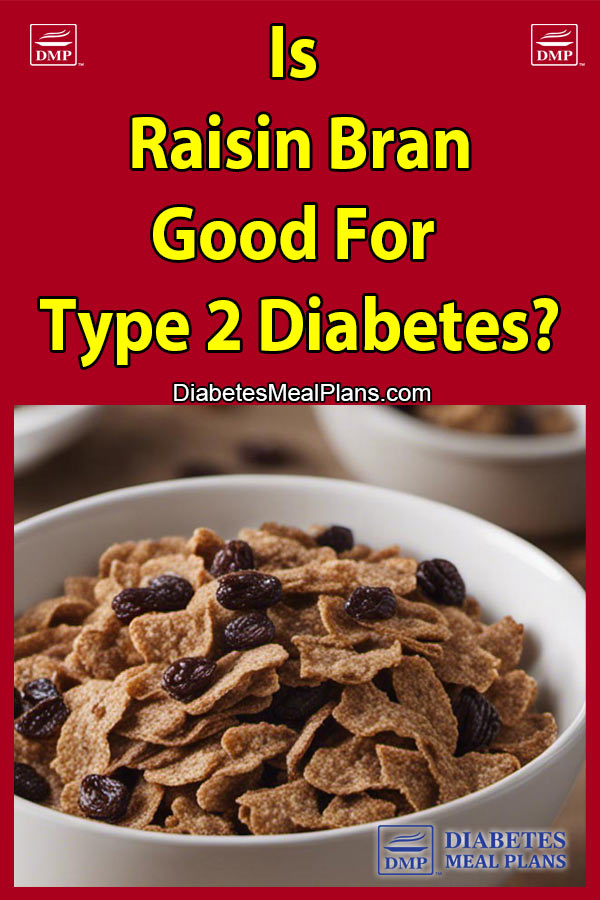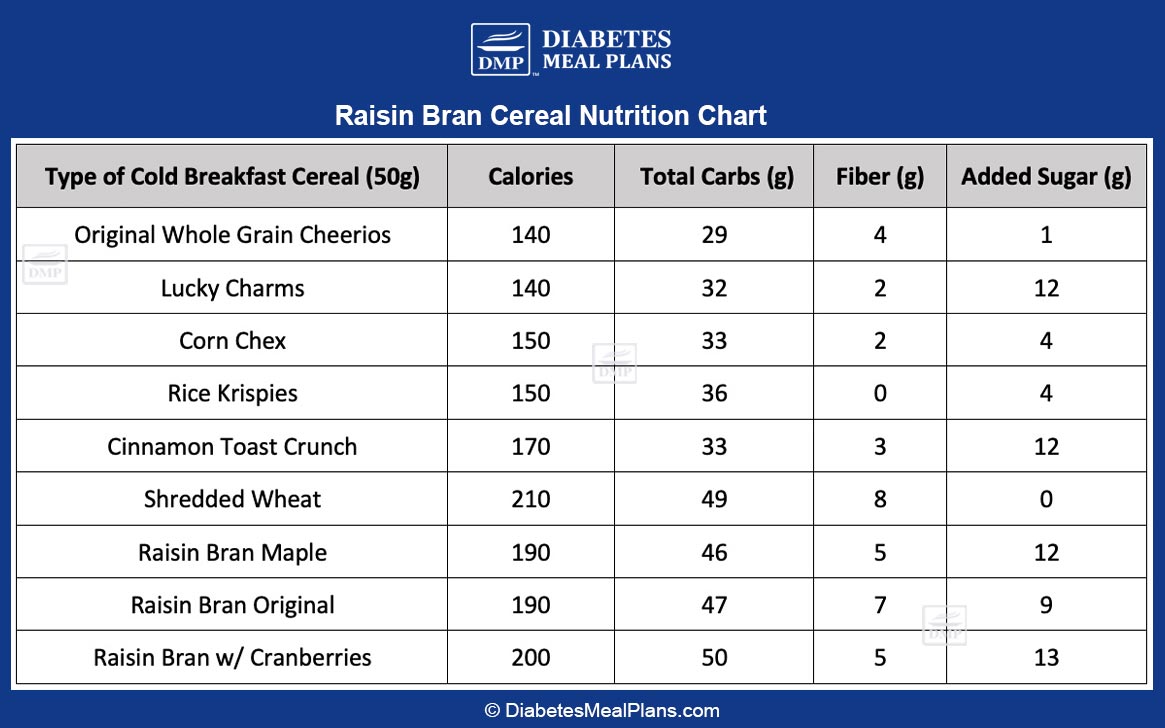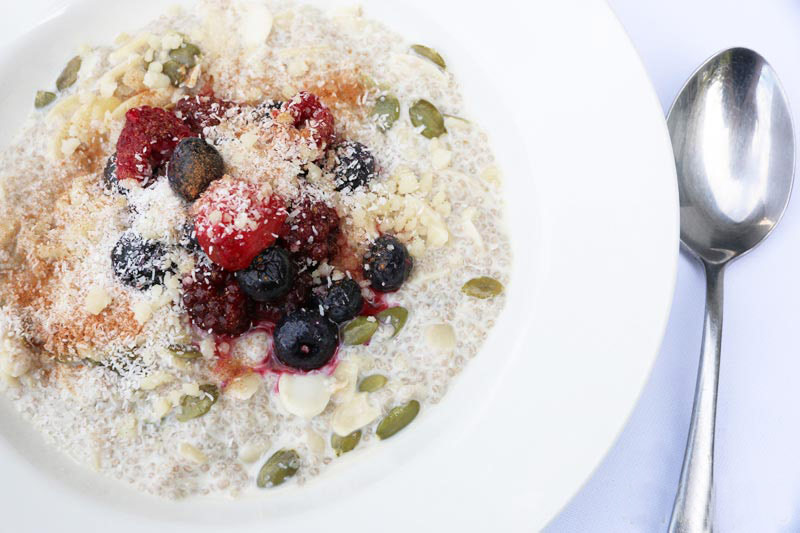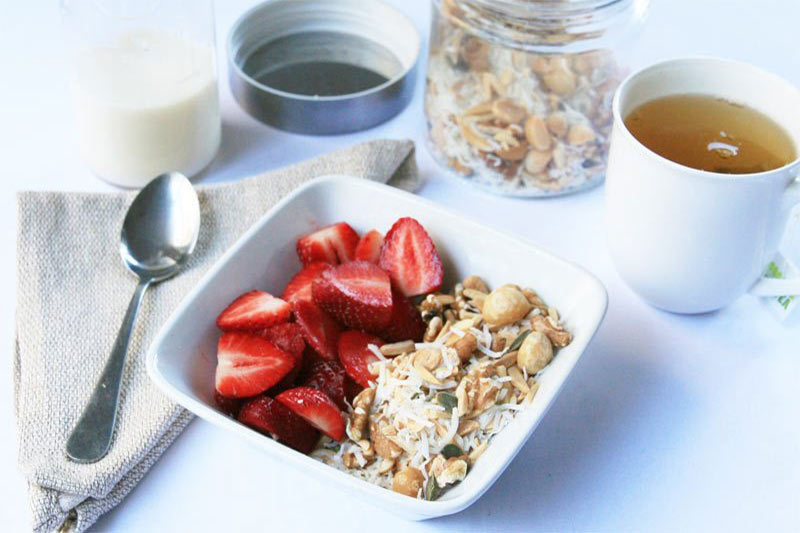Raisin Bran cereal originated in the rural state of Nebraska in the 1920s.
Despite these humble beginnings, Raisin Bran grew in popularity and still remains a top seller with nearly 50 million boxes being purchased each year.
You might know Raisin Bran as one of the “healthier” breakfast cereals out there, but is it right for people with type 2 diabetes?
Raisin Bran Nutrition Facts
As you peruse the breakfast aisle at the grocery store, you may notice all kinds of health claims proudly advertised on colorful cereal boxes.
Raisin Bran claims that their cereal is “heart healthy,” “high fiber,” and “made with real fruit!”
Sounds pretty good, right?
Let’s take a closer look to see if these claims check out.
To start out, here’s what’s in a 1-cup (59g) serving of original Raisin Bran cereal (without milk):
- Calories: 190
- Carbohydrates: 47g
- Added Sugar: 9g
- Fiber: 7g
- Protein: 5g
- Fat: 1g
As the name implies, Raisin Bran contains wheat bran (the outer layer of the wheat kernel). The bran is high in fiber and is a top selling point for this cereal.
Yes, dietary fiber is great for slowing digestion, managing hunger, and regulating blood sugar levels, but that’s where our praise for Raisin Bran ends!
That 7g of fiber pales in comparison to the enormous dose of carbohydrates you get in a single cup of cereal.
Loaded with 47g of total carbs and 9g of added sugar, Raisin Bran may give you a short burst of energy, but will leave you feeling groggy, drained, and really hungry!
Oh, and the “real fruit” they were advertising on the box? Those raisins (dried grapes) are over flowering with sugar. Dried fruit can be a high carb trap for people with diabetes, so it’s best to skip anything containing it.

Whole Grains & Type 2 Diabetes
A major selling point of Raisin Bran are the “whole grains” it contains – in this case, whole wheat.
In the battle between whole grains (those containing fiber) and refined grains, whole grains are the obvious winner.
But with that said, whole grains aren’t necessarily a smart food choice for everybody. Whole grains are hailed as a superfood for warding off heart disease in the general population, but that doesn’t necessarily apply to people with diabetes.
Those with insulin resistance can’t process excess carbohydrates, so when they eat a bowl of cereal containing nearly 50g of carbs, their blood sugar shoots up.
Eating high-carb meals on a regular basis leads to chronically high blood sugar, which adds to the fire of chronic inflammation and increases your risk of heart disease!
In contrast, low carb diets have been shown to improve post-meal blood sugar levels, insulin levels, satiety (feeling of fullness after eating), and balance hunger levels throughout the day.
In our scientifically proven T2Diet Program, we encourage people to exclude most grains or at least minimize them, and they get incredible results!

Raisin Bran Vs Other Breakfast Cereals
Now that we know how high carb cereals like Raisin Bran can affect blood sugar levels, let’s compare Raisin Bran to some of its competitors.
You may not be surprised to see that the original flavor of raisin bran contains slightly less sugar than an obvious “sugar cereal” like Lucky Charms, but did you notice that Raisin Bran actually contains a greater amount of total carbs?
It’s definitely wise to limit added sugar in your diet, but don’t lose sight of the bigger picture – reducing total carbs in your diet is a key factor in managing blood sugar levels and lowering A1c.

All these cereals have a lot of carbs because they’re made from high carb grains like wheat, oats, rice, corn.
Even the ones that don’t contain much “added sugar” still have enough carbs to set you up for a very tired, hungry, and possibly irritable, afternoon.
Also, remember that these numbers account for just the dry cereal itself. Pour a cup of cow’s milk over your morning cereal and you’ll add another 12g of carbs to your total count.
Adding a cup of high carb plan-based milk like oat or soy milk can easily wrack up an extra 15-20g of carbs.
Do you see where this is going? An innocent bowl of breakfast cereal can quickly turn into an all-out carb-fest!
Recommendations for Raisin Bran and Diabetes
It should be clear by now that we don’t recommend Raisin Bran.
Traditional, grain-based cereals like Raisin Bran contain far too many carbs and not enough stabilizing nutrients like fat and protein to be worth your time.
Luckily, there are better low-carb options out there for those in need of a sweet (or savory) morning meal!
Here are some ideas:
- Devoted cereal-lovers should look into these low carb, store-bought alternatives to traditional options. You get all the crunch of a classic breakfast cereal with way fewer carbs.
- For a sweet and decadent breakfast, try our crunchy Roasted Nut Muesli recipe or our tasty Bircher Muesli with berries!
- If you’re looking for a savory option, try a hearty Kale & Tomato Egg Muffin or Mixed Veggie Scramble.
If you need help getting started with your diet plan, grab a free copy of our recommended food list – it will get you on track and inspire you to eat to treat diabetes.




Leave a Reply